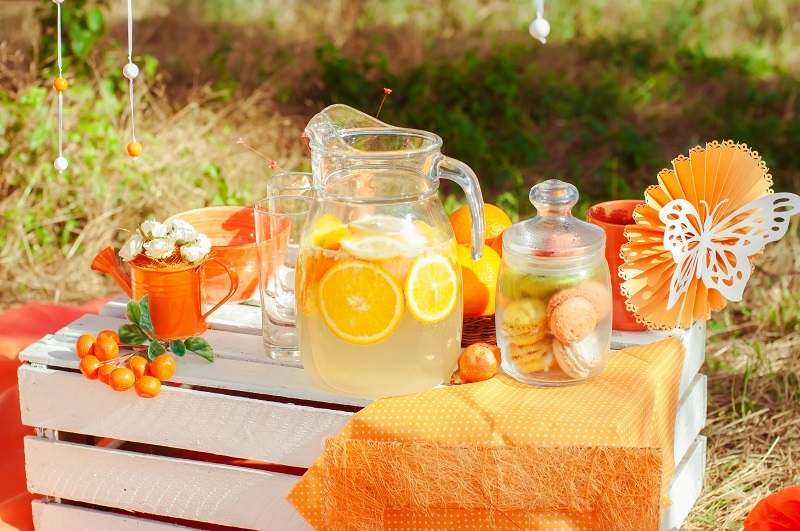Extend the Lifespan of Your Poinsettias with Care
Posted on 27/06/2025
Extend the Lifespan of Your Poinsettias with Care: The Ultimate Guide
The vibrant Poinsettia is a staple during the holiday season, gracing homes and businesses with its iconic red, white, or pink bracts. For many, these stunning plants symbolize warmth and joy during the winter months. However, most people see their poinsettias wilt and fade mere weeks after purchase. Did you know with proper care you can extend the lifespan of your Poinsettia well beyond the holidays? In this comprehensive guide, we'll unveil the secrets to nurturing healthy poinsettias so you can enjoy their festive beauty for months--even years!

Understanding Poinsettias: Basic Facts
- Scientific name: Euphorbia pulcherrima
- Origin: Native to Mexico and Central America
- Common colors: Red, Pink, White, Cream, Speckled
- Life Cycle: Perennial shrub, commonly grown as an annual
- Bloom period: Winter, but can rebloom with proper care
Poinsettias are not just fleeting holiday decorations! With the ideal care routine, these luscious plants can thrive for years. Let's delve into a step-by-step approach to maximising the life and health of your Poinsettia plant.
Essential Tips to Extend the Lifespan of Your Poinsettia
1. Choosing a Healthy Poinsettia
Start with a strong foundation. When selecting your Poinsettia, look for vibrant, unblemished foliage and bracts. Leaves should be deep green with no signs of wilting or yellowing. Inspect the plant for small white bugs (such as whiteflies) and avoid any with discolored stems or fungus on the soil surface.
2. Creating the Ideal Indoor Environment
- Temperature: Poinsettias prefer a steady temperature between 60-70?F (15-21?C) during the day and not below 55?F (13?C) at night.
- Draft Protection: These plants are sensitive to temperature swings and cold drafts. Keep your poinsettia away from exterior doors and drafty windows.
- Humidity: Moderate to high humidity (50% or higher) is beneficial. In winter, indoor air is often dry--use a humidity tray or mist the plant occasionally to increase moisture.
- Sunlight: Place your poinsettia in bright, indirect light. East or west-facing windows are ideal. Avoid direct midday sun, which can scorch the bracts.
Pro Tip: Rotate your plant every few days to promote even growth.
3. Watering Your Poinsettia for Lasting Beauty
Improper watering is the leading cause of premature poinsettia failure. Here's how to get it right:
- Check soil moisture: Insert your finger an inch into the soil; water only when the top inch feels dry.
- Water deeply and thoroughly: Soak the soil until water drains from the bottom. Never let the plant sit in drained water, as this can cause root rot.
- Drainage first: If your Poinsettia is in a foil-wrapped nursery pot, poke holes or remove the wrapping to ensure proper drainage.
- Frequency: Most Poinsettias thrive with watering once a week, but check more frequently in dry environments.
*Never let your Poinsettia dry out completely! Wilting and leaf drop are common signs of both over and under-watering.*
4. Feeding Your Poinsettia
Fertilize your plant to encourage continuous growth and help it rebound after the holiday blooming cycle. Here's how to support extended poinsettia lifespan with feeding:
- Type: Use a balanced, water-soluble houseplant fertilizer.
- Timing: Do not fertilize while in bloom! Begin a monthly feeding schedule about 6 weeks after bracts fade (usually late winter or early spring).
- Dilution: Follow the package instructions, but consider using at half strength, especially the first few feedings after the holiday season.
Consistent but moderate feeding helps your poinsettia recover and thrive year-round.
Seasonal Care Guide for Poinsettias
Winter (Holidays and Shortly After)
- Display your Poinsettia in the brightest spot available.
- Keep away from heat sources--no radiators or fireplaces.
- Monitor for leaf drop and adjust water accordingly.
- Mist the air if your home is dry.
Late Winter to Early Spring
- Once the colorful bracts begin to fade and drop, consider cutting the plant back to about 6 inches in height.
- Reduce watering slightly to allow the plant a short rest period.
- Resume fertilization in early spring.
- Transplant to a slightly larger pot if root-bound.
Spring and Summer Care
- Move your Poinsettia outdoors once overnight temperatures remain above 55?F (13?C).
- Place in dappled shade, avoiding direct afternoon sunlight.
- Pinch back stems in early summer to encourage bushier growth.
- Continue monthly feeding and regular watering.
- Watch for pests such as aphids or spider mites--treat promptly if found.
Autumn Transition & Re-blooming
- Bring your Poinsettia indoors before the first frost.
- To trigger blooming, poinsettias need long winter "nights"--at least 14 hours of complete darkness each day for about 8 weeks starting in late September.
- Cover with a cardboard box or place in a dark closet from early evening until morning to mimic these conditions.
- Return to bright, indirect light each day.
With dedication and attention, your poinsettia can rebloom each holiday season, delighting your family for years to come!
Common Poinsettia Problems & Solutions
- Leaf Drop: Usually caused by sudden temperature changes, drafts, or underwatering. Keep the environment stable and monitor watering closely.
- Wilting: Both over and under-watering can cause wilting. Examine soil moisture and allow excess water to drain.
- Yellowing Leaves: Sign of too little light or poor drainage. Move to a brighter location and ensure good drainage.
- Pests: Examine regularly for whiteflies, aphids, or mites. Treat with insecticidal soap if found.
- Fungal Growth: Usually result of overwatering or high humidity. Improve air circulation and cut back on watering.
Extending the Life of Poinsettias: Myths and Misconceptions
- Myth: Poinsettias are highly poisonous.
Truth: They are not deadly if ingested, but can cause mild stomach upset in pets and children. Keep out of reach to avoid irritation. - Myth: Poinsettias are only for holiday decoration.
Truth: With proper care, these perennials can thrive and rebloom year after year. - Myth: Once a Poinsettia drops its leaves, it cannot recover.
Truth: Given patience, correct watering, and feeding, a Poinsettia can regrow leaves and bracts.
Expert Tips to Make Your Poinsettias Last
- Give your plant room to breathe. Avoid crowding with other plants or decor. Good airflow prevents disease.
- Prevent "chilling injury." Never transport your Poinsettia in freezing weather without proper wrapping. Sudden cold can cause irreparable harm.
- Don't neglect during the "off-season." Regular care throughout the year is crucial for longevity and reblooming.
- Maintain a journal. Track watering, feeding, and seasonal changes--it's easier to make adjustments for future years.

Frequently Asked Questions about Poinsettia Plant Longevity
Can a Poinsettia live for more than one season?
Absolutely! With dedicated care (proper watering, feeding, and light), your poinsettia can be a thriving perennial, reblooming each winter.
How can I make my Poinsettia bloom again?
About eight weeks before Christmas, provide 14-16 hours of total darkness at night and bright light during the day. Maintain temperatures around 65?F and continue gentle feeding.
Is it worth saving a store-bought Poinsettia after the holidays?
Yes! Extending the lifespan of your Poinsettia plant is rewarding, sustainable, and can even become a family tradition. You'll get to enjoy a more robust, bushier plant with each passing year.
Conclusion: Savor the Lasting Beauty of Your Poinsettia
The Poinsettia is far more than just a short-lived holiday houseplant. With thoughtful care and attention to its needs, you can extend the lifespan of your poinsettia from weeks to years. By providing the right environment, watering with care, feeding judiciously, and following seasonal routines, you'll be rewarded with a healthy, vibrant Poinsettia that adds color and joy to your home all year round.
Ready to keep your poinsettia thriving? Refer to this guide throughout the year to enjoy the festive brilliance and enduring elegance of your plant--season after season!
Latest Posts
Choosing the 10 Best Low Maintenance Plants for Your Office Space
The ultimate list of 5 flowers to express love this Valentine's
Extend the Lifespan of Your Poinsettias with Care





